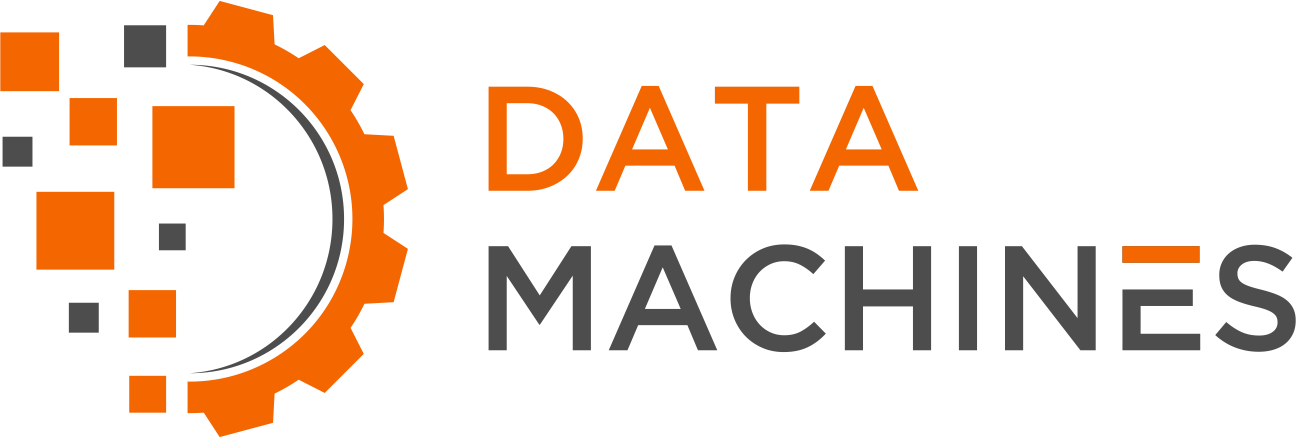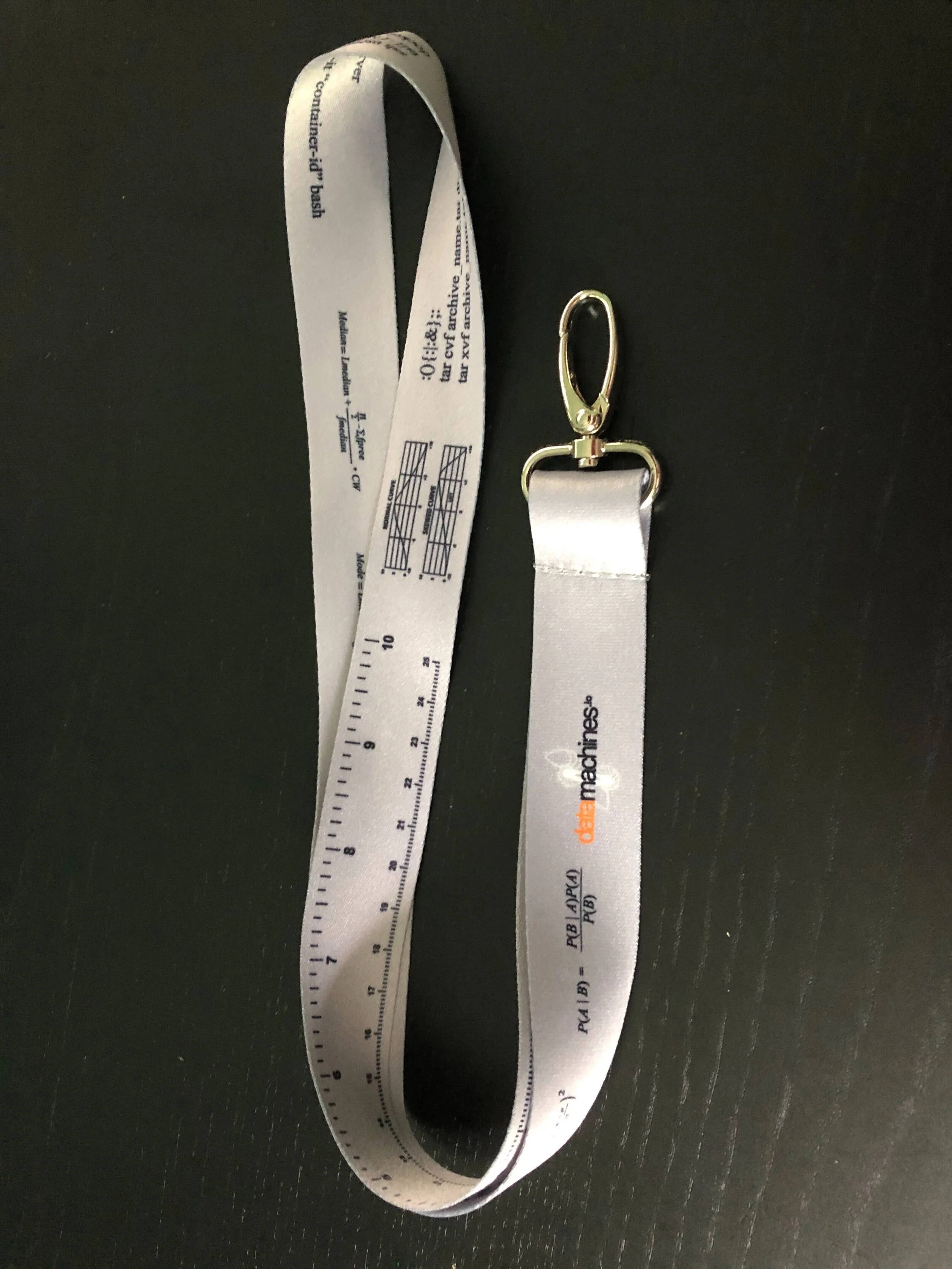DMC’s Utility Lanyard: We’re All About Data
Anyone who has attended a development conference knows that company swag is very common in the technology industry. After all, every startup wants to get the word out about what they do. Company-related merchandise is an indirect way of networking with future partners and clients in that it represents the company in a memorable way. For Data Machines Corp., we thought the best way to represent ourselves was through something we work with a lot: data. But, why incorporate data into a lanyard? DMC is all about brainstorming solutions, no matter how complicated or simple, which is why we valued a piece of swag that could stand as a solution to everyday dilemmas, like holding keys and useful tools. But, we also wanted to create a tool within a tool by adding relevant measurements and formulas that can be easily accessed and referenced at any time in real life. Not only that, but we wanted different aspects of said tools to further represent our company’s work, goals, and mission statement. In this blog post, we will go over the design of our corporation’s “Bat-belt” lanyard and the background behind every detail.
Form of Measurement: For one, DMC employees thought it would be useful for the lanyard to have some form of measurement - nothing too complex or long like a measuring tape, but something that could help with simple measurements, the way a standardized ruler would. Originally, we planned on mainly marking the ruler part of the lanyard using the metric system, which is used by a majority of the world. But, because our company is U.S.-based, and because we have yet to work with an international partner, we opted for using the classic centimeters-to-inches approach. To use the ruler, one would simply need to unclip their lanyard to measure the item in question. This easy task is representative of our goal to create simple solutions to complex or everyday problems.
Commonly Used Command Lines: Originally, the lanyard design featured Hadoop command lines. But, DMC has been using Kubernetes more and more in its projects and contracts. That said, it made more sense to include Kubectl command lines. While DMC mostly incorporated command lines that are most often utilized in our work, a couple of these commands are symbolic to the company’s mission and goals. The lanyard features the command line ssh user@server, which is the command to link the server with a secure shell. DMC works to create technological advancements that are both quick and efficient, and safe to use. For instance, the company has incorporated technology like biographic sensors to ensure that only certain authorized people can access classified information in specific devices. Keeping information and users safe is one of the company’s most important goals. By incorporating this command onto the lanyard, DMC expresses its firm belief in safety and security. Furthermore, the line :(){:|:&};: is a “Fork Bomb” or denial-of-service attack that overloads a system with useless commands. This command is featured on the lanyard as a representation of what our company works to prevent in our innovations, further enforcing our firm belief in efficient cybersecurity and safety.
Examples of Data Curve Types: The data curve types on the lanyard are both representative of our work and educational. Featured in the design are two basic graphs showing Gaussian distributions, which are commonly used when recording data and statistics, a task that DMC incorporates into all of its innovations. The bottom graph features a left-skewed curve labeled as such to remind analyzers and users to read a curve distribution by its tail and not by its head. These types of graphs are used to determine the probability of an event, which symbolism will be further discussed in the next section.
Equations and Formulas: There are seven equations included on this lanyard, all relevant to DMC’s work with data and statistics. The formulas from left to right are as follows: median, mode, definition of standard deviation, z-score, mean, definition of standard normal distribution, and Bayes’ Law. While these are all important to our work, the formulas for the definition of standard deviation, the definition of standard normal distribution, and Bayes’ Law are the most representative of what our company does. All of the three formulas have a hand at specifically measuring the probability of an event or occurrence (sometimes with the help of Gaussian curves, as mentioned in the previous section). In our work, we use the calculated probability of events to determine what processes need to be improved or better secured. This aligns perfectly with the automatic aspect of our core technological values, in that our work focuses on adapting to unpredictability while “simplifying… intrinsic complexity for operators and users”. Our company seeks to automate what is predictable, and predictability fluctuates with time and usage.
Data Machines Corp. incorporates both utility and meaning into all of its products, including the company swag. The issued lanyard is both useful and symbolic in its use of basic measurements, command line examples, data curve examples, and equations and formulas.
For more information on open positions at Data Machines Corp., visit our Careers page.

